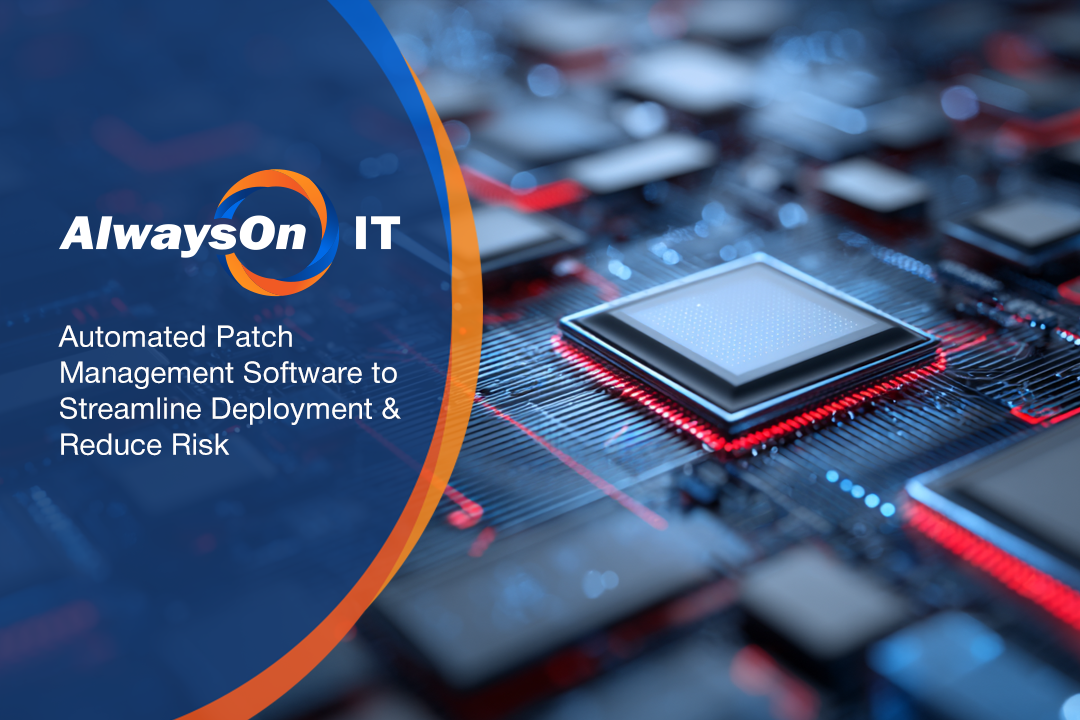3281 E. Guasti Rd, STE 700, Ontario, CA 91761
1712 9th Ave SW, Watertown, SD 57201

Automated patch management is no longer optional—it's essential. With growing cyber threats and complex IT environments, relying on manual patching can leave your systems exposed. In this blog, you'll learn how automated patching works, why it's critical for your business, and how to choose the right patch management tool. We’ll also cover key features, common mistakes to avoid, and best practices to help ensure your systems stay secure and compliant.
[.c-button-wrap2][.c-button-main2][.c-button-icon-content2]Contact Us[.c-button-icon-content2][.c-button-main2][.c-button-wrap2]
Automated patch management is the process of usng software to detect, download, test, and deploy patches across your systems without manual intervention. It helps reduce the risk of unpatched vulnerabilities that cyber attackers often exploit. By automating this process, you save time, improve consistency, and strengthen your overall security posture.
Manual patching can be time-consuming and error-prone. With automated systems, you can scan for missing patches, schedule deployments, and track progress through a centralized dashboard. This is especially useful for managing operating systems, third-party, and endpoints across your network.

Even with automation, patching can go wrong if not handled correctly. Here are some common pitfalls to watch out for:
Many businesses focus only on OS updates and forget about third-party applications like browsers and productivity tools. These apps are often targeted by attackers and need regular updates too.
Waiting too long to deploy security patches increases your exposure to known vulnerabilities. Automated systems help you deploy patches faster and more consistently.
Rolling out untested patches can break systems or cause downtime. Use a patch management tool that allows testing in a staging environment first.
Without clear reporting, it's hard to know which systems are updated. A good automated patch management tool provides real-time dashboards and reports.
Endpoints outside your main network, like remote laptops, are often missed. Choose a solution that can reach and update these devices reliably.
Old tools may not support new OS versions or applications. Make sure your patch management software stays current with your environment.
Automated patching offers several advantages that manual processes can’t match:

Selecting the right automated patch management software depends on your environment and goals. Look for tools that support your operating systems, third-party applications, and remote endpoints. The software should also integrate with your existing IT systems and offer flexible scheduling, reporting, and rollback options.
Some solutions offer automated patch deployment with minimal setup, while others provide advanced customization. Evaluate what level of control and automation you need. Also, consider whether the tool can simplify your patch management process and scale with your business.
Not all tools are created equal. Here are some features that make a difference:
A single dashboard helps you monitor patch status, schedule deployments, and generate reports. It also improves visibility across your entire IT environment.
Make sure the tool supports all your operating systems and third-party applications. This ensures complete coverage and reduces the risk of unpatched systems.
Automated scans help identify missing patches quickly. Reporting features help you track compliance and prove it during audits.
Look for tools that let you schedule deployments during off-hours or stagger updates to minimize disruption.
If a patch causes issues, rollback features let you revert to a previous state without downtime.
Integration with your existing IT management systems can streamline workflows and reduce duplication of effort.

Implementing automated patch management is not just about installing software. You need a plan that includes testing, scheduling, and monitoring. Start by identifying all systems that need patching, including remote endpoints and third-party applications.
Set up automated scans to detect missing patches and define approval workflows for critical updates. Monitor patch deployment progress and adjust schedules as needed. Over time, review your patch management process to ensure it continues to meet your security and compliance goals.
Following best practices can help you get the most out of your patch management system:
These steps help ensure your systems stay protected and your patching process runs smoothly.

Are you a business with 20 or more employees looking for a better way to manage patches? If you're growing and need to protect more systems without adding more IT staff, automated patch management could be the answer.
At Trinity Networx, we help businesses simplify patching, reduce security risks, and improve compliance. Our team can guide you through selecting, setting up, and managing the right automated patch management software for your organization.
Contact Us
Patch management refers to the overall process of identifying, testing, and applying updates to software and systems. Automated patch management uses software to handle these tasks without manual effort. This helps reduce the risk of missing patches and improves consistency across your network.
Automation also allows for scheduled scans, centralized dashboards, and faster deployments. It’s especially useful for managing multiple operating systems, third-party applications, and remote endpoints.
Automated patch management helps reduce vulnerabilities by quickly applying security patches as soon as they’re available. This limits the window of exposure to cyber threats. It also ensures that all systems, including remote devices, stay up to date.
By using automation, you can scan for missing patches regularly and deploy them without delay. This strengthens your security posture and helps prevent attacks that exploit known vulnerabilities.
A good patch management tool should support multiple OS types, third-party applications, and remote devices. It should also offer features like automated scanning, flexible deployment, and rollback options.
Look for tools that simplify your patch management process and integrate with your existing IT systems. A centralized dashboard and real-time reporting can also help ensure visibility and control.
Yes, many automated patch management tools support Linux systems. They can scan for missing patches, schedule deployments, and apply updates across various Linux distributions.
This helps ensure that your Linux servers and endpoints are not left unpatched. It also simplifies patching in mixed-OS environments, reducing the risk of security gaps.
Patch management helps with compliance by ensuring that all systems are updated with the latest security patches. This is often a requirement in industry regulations like HIPAA, PCI-DSS, and others.
Automated patch management software can generate reports that prove compliance during audits. It also helps reduce the risk of data breaches caused by unpatched vulnerabilities.
Manual patching can lead to errors, delays, and missed updates. These gaps increase the risk of cyberattacks and system failures. It also puts more pressure on IT teams to keep up.
Automated patch deployment reduces these risks by handling updates consistently and on schedule. It also frees up your team to focus on more strategic tasks.